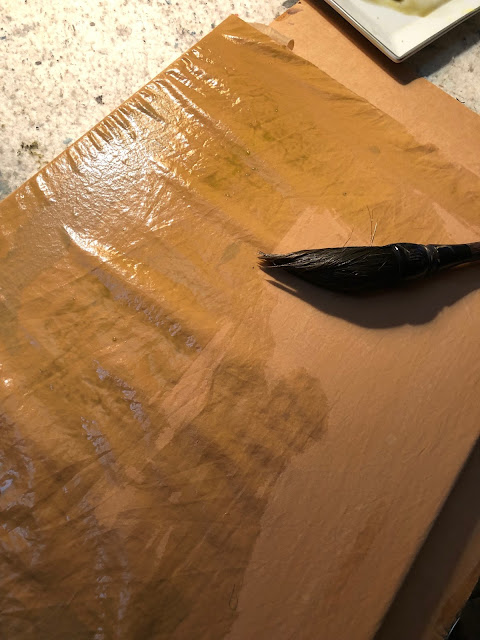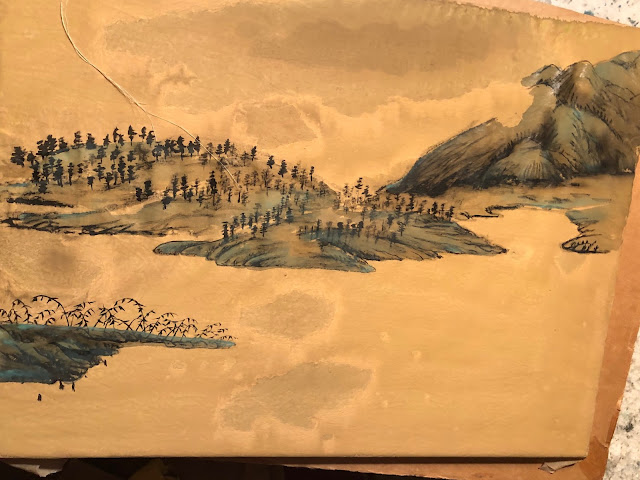A friend showed me a painting on silk and it looked very nice. Except that I didn't think the material was silk.
Many of my friends do the
Gongbi style of Chinese brush and they typically paint on silk. They buy their yards of silk from art supply stores found on the Internet. To me that material looks like a very fine mesh translucent screen and it feels stiff and brittle, more like nylon than silk. It also tears rather easily. I just can't believe that this is the revered silk that is used to weave clothes.
I could recall seeing antique silk paintings in museums and I would very much try to re-create that ambience. My plan was to get some silk fabric and use that as my canvas.
I had some scraps of a brownish silk fabric at my disposal so I cut out a swatch and stapled that on a regular canvas. I was lazy.
The fabric looked a little too red for me, so I thought I could tone it down a bit by using a light green wash. Except that the silk fabric would not take on the wash, as if it was treated with S
cotchgard. The wash was beading up on me.
I figured I needed to condition the fabric first, so I mixed some alum solution with my wash and tried again. Perhaps the alum in my wash could work as a mordant and make the color stick. Maybe?

I didn't know whether it was the alum or was it my perseverance, the silk fabric was taking on the wash nicely now. Unfortunately the fabric didn't present nicely at all after the wash dried up. Somehow the surface was very blotchy. Perhaps my alum solution was not mixed in evenly with my light green wash so there was uneven distribution of the pigments. Now I was faced with painting something that could side-step or blend in with the discolorations. The painting I recalled seeing in a museum had a very simple composition. A spit in the middle of the river, with the mainland as the background, dotted with trees. I remember vividly that it was the dotted trees that helped to define the topography of the land. Sort of like the traditional moss dots, but transforming them into trees. I could borrow the discolored blotches as the typical clouds and mists one sees in traditional Chinese landscape paintings. How clever!

The soiled spots in the front center were too ostentatious. I needed to tone them done. I tried to hide them with a darker shade of green, suggesting a body of water, with uneven surfaces caressed by the wind.
Distant mountains occupy the background, as I recalled.
The cloud/mist feature was perfectly represented by the swath of void.
Simple hemp fiber
chuen depicted the landmass in the background, nothing complicated.
After I had all the features down on the painting, I painted in a few punts. The ones in the channel would get a white sail, adding an exclamation mark.
I wouldn't say this was an exercise in futility, but it was certainly frustrating; especially in the beginning. I was constantly needing to find ways to amend my boo-boos but in the end I felt satisfied and enjoyed the journey. I suppose that's the reason I paint.





























